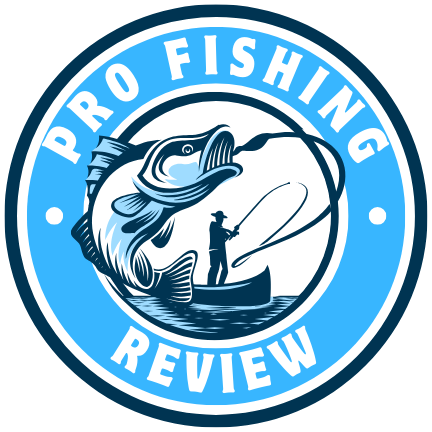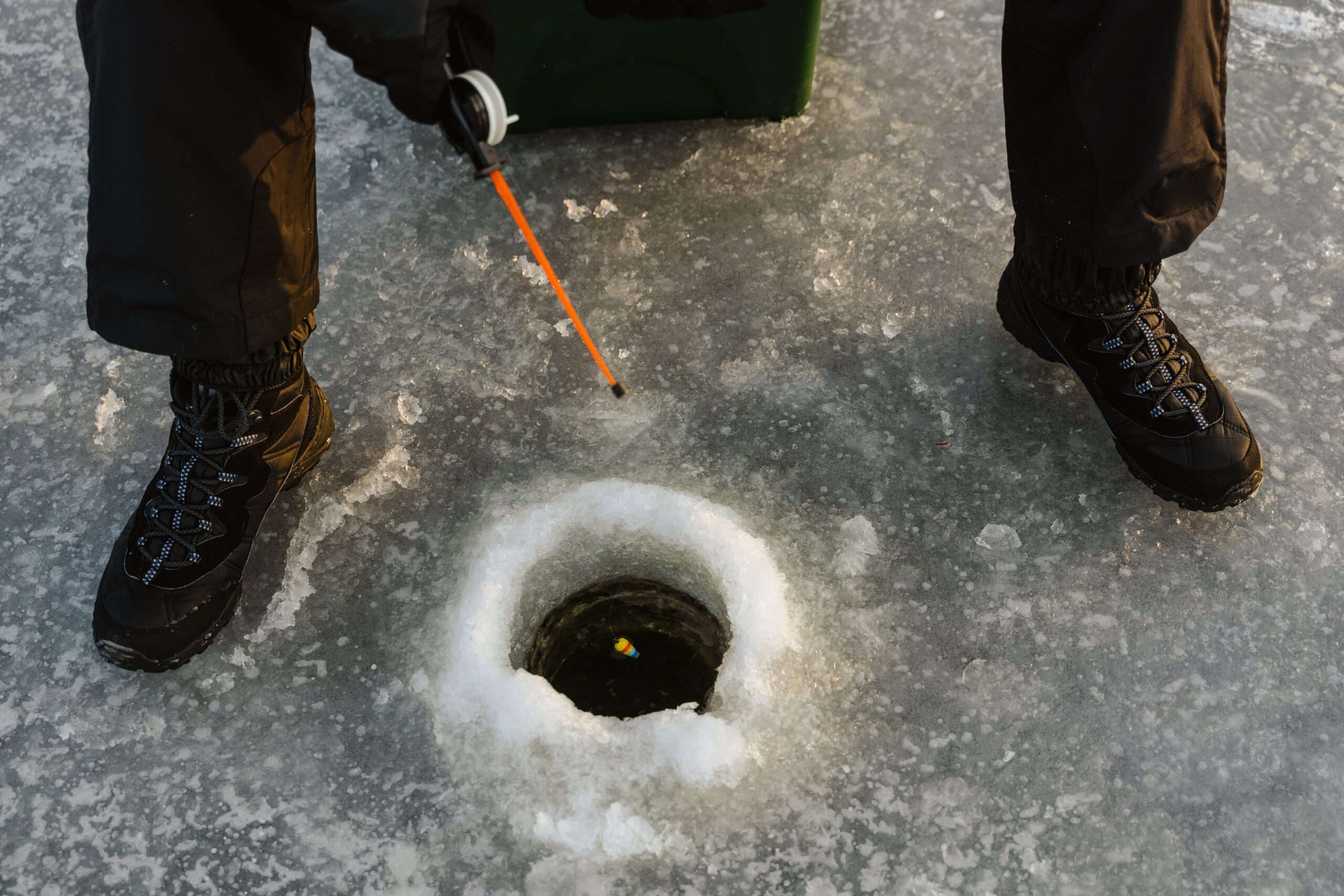If you’re looking to catch tarpon, the best way to do it is by using dead bait on the bottom or live bait during the first hour of light in the morning. Tarpon are migratory fish, making their way up from the Caribbean to Florida in the early spring and heading back south in November. These magnificent creatures can be found in various locations, including beaches, inlets, creek mouths, turning basins, as well as freshwater rivers and canals. Depending on where you’re fishing, it’s important to have the right tackle combo. For large tarpon off the beach, a 6500 series reel, a 7-foot medium/heavy or heavy strength rod, filled with 50-pound braid and a 60 to 100-pound leader is recommended. Keep an eye out for natural indicators of bait schools, such as pelicans and terns diving near the shore. Inlets are also great spots to catch big tarpon, especially at night. Here, an 8500 series reel, a 7 1/2-foot medium/heavy strength rod, filled with 80-pound braid and a 100-pound leader will serve you well. For tarpon around creek mouths, a 4500 series reel, a 7 to 7 1/2-foot medium/heavy strength rod, filled with 30-pound braid and a 30 to 50-pound leader is the perfect combo. Keep in mind that tarpon can also be found in freshwater canals and rivers, and smaller juvenile tarpon can be caught all year round in Florida. These impressive fish have a unique lung-like swim bladder that allows them to take in atmospheric oxygen directly, giving them an advantage over other fish species. During the rainy season, spillways attract tarpon from saltwater estuaries to feed on freshwater fish that are sucked into the outflow. For fishing spillways, popular lures include white DOA CAL shads with a 1/8 ounce red jig head. With these tips and the right gear, you’ll have a great chance of catching tarpon and experiencing the thrill of reeling in these incredible fish.
The best way to catch tarpon with dead bait on the bottom
If you’re looking to catch tarpon, one of the most effective methods is using dead bait on the bottom. Tarpon are migratory fish, making their way from the Caribbean to Florida in early spring and heading back south in November. They can be found in various locations such as beaches, inlets, creek mouths, turning basins, as well as in freshwater rivers and canals. Understanding their behavior and choosing the right fishing location is crucial for success.
Understanding the behavior of tarpon
To increase your chances of catching tarpon, it’s important to understand their behavior. Tarpon are known to migrate, moving in large numbers along the coastline. They prefer warmer waters and can be found in both saltwater and freshwater environments. Understanding their migration patterns, preferred habitats, and feeding habits will help you position yourself in the right location for a successful catch.
Choosing the right fishing location
When it comes to tarpon fishing, location is key. Depending on the time of year and the behavior of tarpon, different locations may be more productive than others. Targeting beaches for tarpon is a popular choice, especially during their migration season. Exploring inlets can also be fruitful, as tarpon tend to gather in these areas. Additionally, creek mouths and freshwater canals and rivers can offer opportunities to catch tarpon. Identifying the right location based on tarpon behavior and your specific fishing goals is crucial for a successful outing.

This image is property of images.pexels.com.
Selecting the ideal tackle combo
Having the right tackle combo is essential when targeting tarpon. For fishing off the beach, a 6500 series reel is recommended, paired with a 7-foot medium/heavy or heavy strength rod. Fill the reel with 50-pound braid and use a 60 to 100-pound leader. This setup will provide the necessary strength and durability to handle large tarpon. When fishing in inlets, opt for an 8500 series reel, paired with a 7 1/2-foot medium/heavy strength rod. Fill the reel with 80-pound braid and use a 100-pound leader for added strength. Adjust your tackle combo based on the location and size of tarpon you’re targeting.
Using natural indicators to locate bait schools
Observing natural indicators can help you locate bait schools, which in turn can attract tarpon. When fishing off the beach, keep an eye out for pelicans and terns diving near the shore. These birds often dive to catch fish, indicating the presence of bait schools. If you notice an active feeding frenzy, it’s a good sign that tarpon may be in the area as well. Pay attention to these natural indicators to increase your chances of finding tarpon.

This image is property of images.pexels.com.
Techniques for fishing off the beach
When fishing off the beach, timing is crucial. The best time to use live bait is during the first hour of light in the morning, as tarpon tend to be more active during this time. If you prefer using dead bait on the bottom, there are several techniques to consider. Prepare your dead bait by hooking it through the lips or the back, ensuring that it stays securely on the hook. Cast your bait out into the water and allow it to sink to the bottom. Let the bait sit and periodically check for any signs of tarpon. Once you get a bite, be prepared for a strong fight. Hooking and fighting tarpon off the beach requires patience and skill, so be prepared for an exciting battle.
Tips for fishing in inlets
Fishing in inlets can be an exciting and rewarding experience. Large tarpon can often be found in these areas, especially at night. When fishing in inlets, it’s important to use the right techniques and equipment. Casting your bait into the current and allowing it to drift naturally can be effective in attracting tarpon. Use an 8500 series reel paired with a 7 1/2-foot medium/heavy strength rod, filled with 80-pound braid and a 100-pound leader. This setup will give you the strength and control needed to handle big tarpon in strong currents. Remember to prioritize safety and be aware of your surroundings when fishing in inlets.

This image is property of images.pexels.com.
Strategies for tarpon around creek mouths
Creek mouths can be productive areas for catching tarpon, especially when targeting shallow water with a nearby deep channel. These areas provide a mix of calm waters and potential feeding opportunities for tarpon. When fishing around creek mouths, choose the right fishing techniques for the location. Opt for a 4500 series reel paired with a 7 to 7 1/2-foot medium/heavy strength rod. Fill the reel with 30-pound braid and use a 30 to 50-pound leader. This setup will provide you with the versatility and control needed to navigate the dynamic environment around creek mouths.
Catching tarpon in freshwater canals and rivers
While tarpon are commonly associated with saltwater environments, they can also be found in freshwater canals and rivers. In fact, smaller juvenile tarpon can be caught all year round in Florida. Exploring these freshwater locations can offer a unique fishing experience. Pay attention to the behavior and feeding patterns of tarpon in freshwater and adjust your techniques accordingly. The best time of the year for fishing in canals and rivers may vary, so it’s important to do your research and gather local knowledge. Consider using a similar tackle setup as you would for creek mouth fishing to handle tarpon in freshwater.
Understanding tarpon’s unique swim bladder
One interesting aspect of tarpon is their unique swim bladder, which functions similarly to a lung. Tarpon have the ability to take in atmospheric oxygen directly, allowing them to survive in low oxygen environments or even breathe air when needed. This gives tarpon an advantage over other fish species and contributes to their ability to thrive in various habitats. Understanding this unique adaptation can help you appreciate the resilience and adaptability of tarpon.
Fishing spillways with popular lures
During the rainy season, spillways can attract tarpon from saltwater estuaries. These areas provide an abundant source of freshwater fish that are swept into the outflow. Fishing in spillways can be a thrilling experience, and using the right lures is key to enticing tarpon. One popular lure option is white DOA CAL shads with a 1/8 ounce red jig head. This combination mimics the appearance of a wounded baitfish and can trigger aggressive strikes from tarpon. Experiment with different lure options and techniques to find what works best in your specific spillway fishing location.
Final Thoughts
In conclusion, using dead bait on the bottom is a highly effective method for catching tarpon. Understanding tarpon’s behavior, choosing the right fishing location, and using the appropriate tackle combo are all crucial elements for success. Pay attention to natural indicators, such as diving birds, to locate bait schools and increase your chances of finding tarpon. Whether you’re fishing off the beach, in inlets, creek mouths, or freshwater canals and rivers, there are specific techniques and strategies to maximize your catch. Keep in mind the unique swim bladder of tarpon and its role in their survival. Lastly, don’t forget to explore the exciting world of fishing in spillways, where tarpon can be found feeding on freshwater fish. With the right knowledge and preparation, you’ll be well on your way to catching tarpon with dead bait on the bottom.

